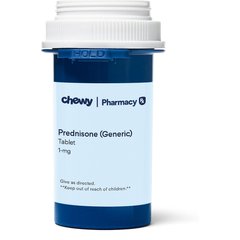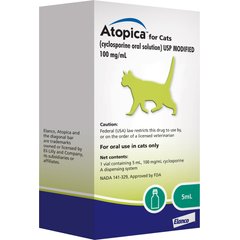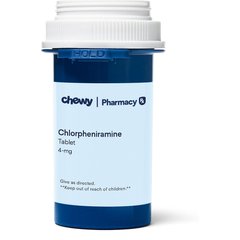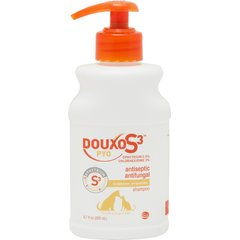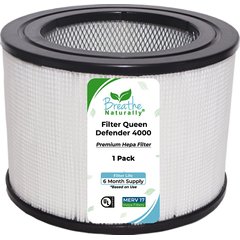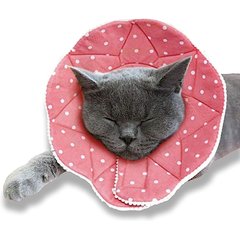Cat Skin Allergies: Types, Symptoms, and How Vets Treat Them
Wirestock/iStock / Getty Images Plus via Getty Images
What Are Cat Skin Allergies?
An allergy happens when the immune system overreacts to an outside substance or protein (antigen), which is called a hypersensitivity reaction.
Over time, further exposure to an allergen leads to an inflammatory (swelling) reaction that damages the skin barrier and leads to symptoms of itching, followed by redness, scaling, crusting, and hair loss.
Cat skin allergies—which can affect any age, breed, or sex of cat—are generally categorized in four groups:
-
Fleas: Flea saliva antigen gets into the cat’s immune system when a flea bites a cat. Flea allergy is the most common type of cat skin allergy and can happen year-round. It’s often diagnosed with direct evidence of fleas on the cat and caused by not using the right or consistent flea control.
-
Food: A food allergy is an uncommon type of cat skin allergy usually caused by an overreaction of the immune system to food proteins, commonly either chicken or beef. Symptoms can happen year-round and at any age. Oddly, symptoms don’t always start after a recent change in diet.
-
Environmental: Also known as atopic dermatitis, environmental allergies are often diagnosed once other types of allergies have been ruled out. Symptoms, which usually are seasonal, may appear around the face, groin, feet, armpits, and ears. They are caused by molds, pollens, dander, grasses, mites, and dust.
-
Contact: This type of allergy is also uncommon because of a cat’s fur layer, and it primarily affects sparsely haired areas like the belly and armpits. These allergies are reactions to detergents, dyes, shampoos, insecticides, and plants.
These four types of allergies can share similar symptoms, but some have unique characteristics that can help the veterinarian figure out and treat the underlying cause.
Symptoms of Cat Skin Allergies
The most common symptoms of cat skin allergies are itching, scratching, and excessive grooming. Secondary skin infections are common, so other symptoms may be seen, such as:
-
Hair loss, often by the neck, base of ears, base of tail, or groin; symmetrical along the back
-
Crusts, scabs, or irritated skin
-
Ear infections (red, stinky, painful ears along with head shaking or scratching)
-
Ulcers and open sores
Causes of Cat Skin Allergies
Cat skin allergies aren’t entirely understood, but there seems to be a genetic factor that makes the skin barrier become more sensitive to allergens.
The immune system overreacts, resulting in an allergy and symptoms.
Repetitive exposure worsens the response.
How Veterinarians Diagnose Cat Skin Allergies
Not all scratching is due to allergies.
After a thorough physical examination, your veterinarian may recommend some skin tests, such as:
-
Skin impression: Skin and hair are taken to look for evidence of bacterial and fungal (yeast) infection. This is done by either imprinting the skin lesion on a slide, or using tape to take skin, hair, cells and debris—which will be stained and looked at under a microscope.
-
Skin scraping: Skin and hair are taken with a “scraping” technique to look for skin mites.
-
DTM or fungal culture/PCR: Hair is taken to look for ringworm infection.
Blood work may also be done to make sure your cat is otherwise healthy and that the right medications can be prescribed.
If a contact allergy is suspected, your veterinarian may simply recommend simply staying away from the suspected allergen, or they may recommend a patch test, which involves keeping the substance in close contact with the skin for about two days and then checking for signs of infection, inflammation, pimples, or crusts.
If a food allergy is suspected, your veterinarian may recommend doing a food trial for 12 weeks with a prescription diet only.
No treats or table scraps can be given during this time.
At the end of the 12 weeks, the previous food is intentionally given to see if there is a return of symptoms, which would signal a food allergy.
If an environmental allergy is suspected and other types of allergies have been ruled out, then your veterinarian may recommend intradermal skin or serum testing.
In this test, a veterinary dermatologist injects antigens into a cat’s skin, measured against a control, and seeks to determine which substance is causing a reaction.
Treatment of Cat Skin Allergies
Treating cat skin allergies can be frustrating because there is no quick cure.
Cats will need to be treated for life and can have repeated flare-ups and secondary skin infections.
Collaborating with your veterinarian is important, as your cat may need frequent checkups and routine skin testing.
Treatment depends on the underlying allergy type.
-
Food allergies mean your cat needs a lifelong prescription diet and can’t be given certain foods.
-
Flea allergies need consistent flea control and environmental management.
-
Contact and environmental allergies mean your cat needs to avoid the allergens as often as possible.
Steroids such as prednisolone and Depo-Medrol® (injectable) and immunomodulators such as Atopica™ may be prescribed to not only control the itch, but also to lower the immune system’s response to the allergen.
Antihistamines like diphenhydramine or chlorpheniramine are also commonly used to help control the itching, but some cats may get relief and others may not benefit at all.
Allergen specific immunotherapy (ASIT), commonly referred to as allergy shots, is the most effective long-term therapy for cats with environmental allergies.
While ASIT can be time-consuming and costly (though much medical care is also needed when treating recurrent infections), decreasing the immune system’s response to the allergen over time can substantially improve your cat’s quality of life.
The results of the intradermal skin testing are used to create a vaccine, which is given in increasing doses over time and decreases the cat’s overall sensitivity.
Fatty acid supplements such as omega-3/fish oils are great products that strengthen the skin barrier, which leads to less skin irritation, redness, and swelling. As a result, itching is decreased.
Bacterial and yeast infections, often occurring secondary to the allergy, can cause an increase in your cat’s level of itching.
Antibiotics and antifungals are usually needed. Long-term treatment with topicals such as medicated shampoos or conditioners is often needed and can often decrease the need for repeated antibiotic usage.
Recovery and Management of Cat Skin Allergies
It’s unlikely that cats can ever “outgrow” their allergies.
Symptoms often reoccur. However, with the right diagnosis and therapy, your cat’s symptoms often improve within a few days.
However, it can take several weeks to have all symptoms go away. Your cat may need lifelong medication and/or diet, and it’s important to follow your veterinarian’s guidelines for rechecks and follow-up care and testing.
Staying away from the allergen, when possible, is best, which may mean removing carpet, uprooting plants and weeds, using HEPA filters, and following a strict flea control regimen.
Recovery cones, T-shirts, or other barrier methods (such as this recovery suit) may be useful as well as more frequent bathing or leave-on shampoos and conditioners.
Prevention of Cat Skin Allergies
Cat skin allergies are not entirely preventable.
Keeping your cat from licking and scratching will prevent future infections. It’s also important to watch the pollen counts and have your cat examined at the first sign of itching.
Apps like Allergy Plus by Pollen.com have been helpful for many pet parents.
Cat Skin Allergies FAQs
What does feline dermatitis look like?
Feline dermatitis, sometimes referred to as miliary dermatitis, is seen as crusts, scabs, and hair loss, along with intense itching, usually around the neck or rear.
How do you treat cat skin allergies naturally?
There are no natural remedies to cure cats of skin allergies; however, since cats with allergies often have a skin barrier problem, adding fish oils to the diet could help lessen itching and scaling.
Having less of the specific allergen, either through avoidance or through cool oatmeal baths, could be helpful.
Because cats are sensitive to many substances, talk to your veterinarian for the best treatment possible.

